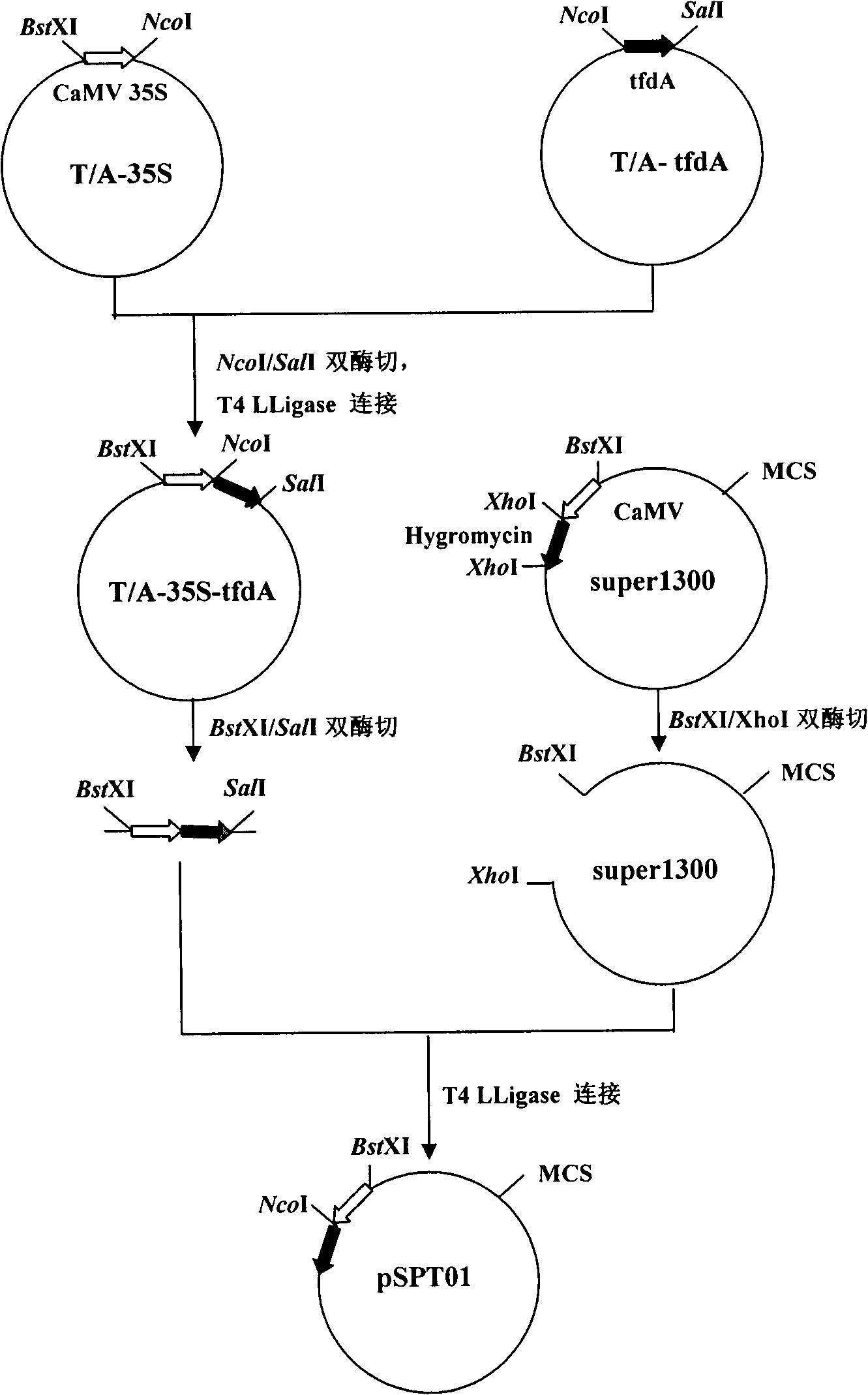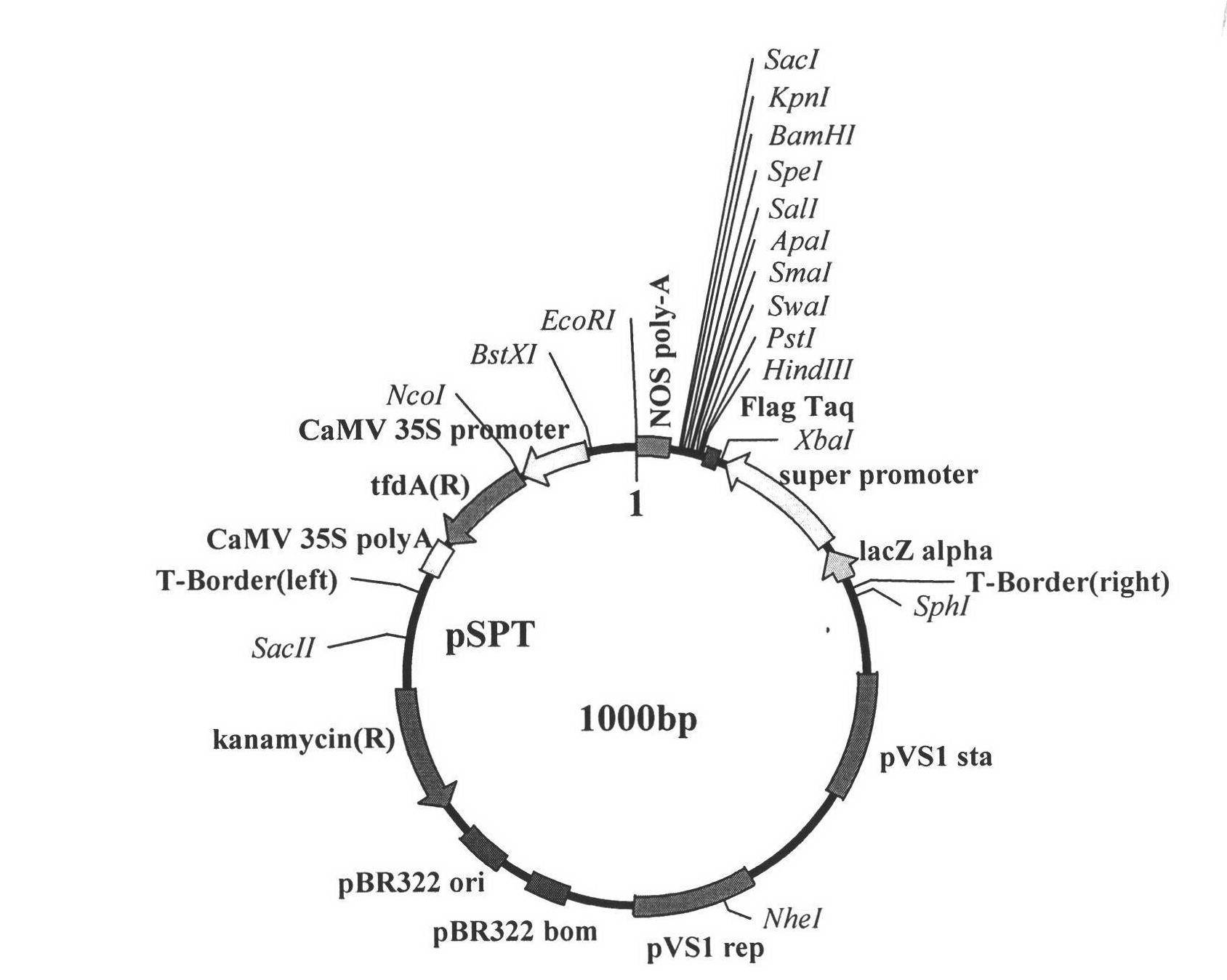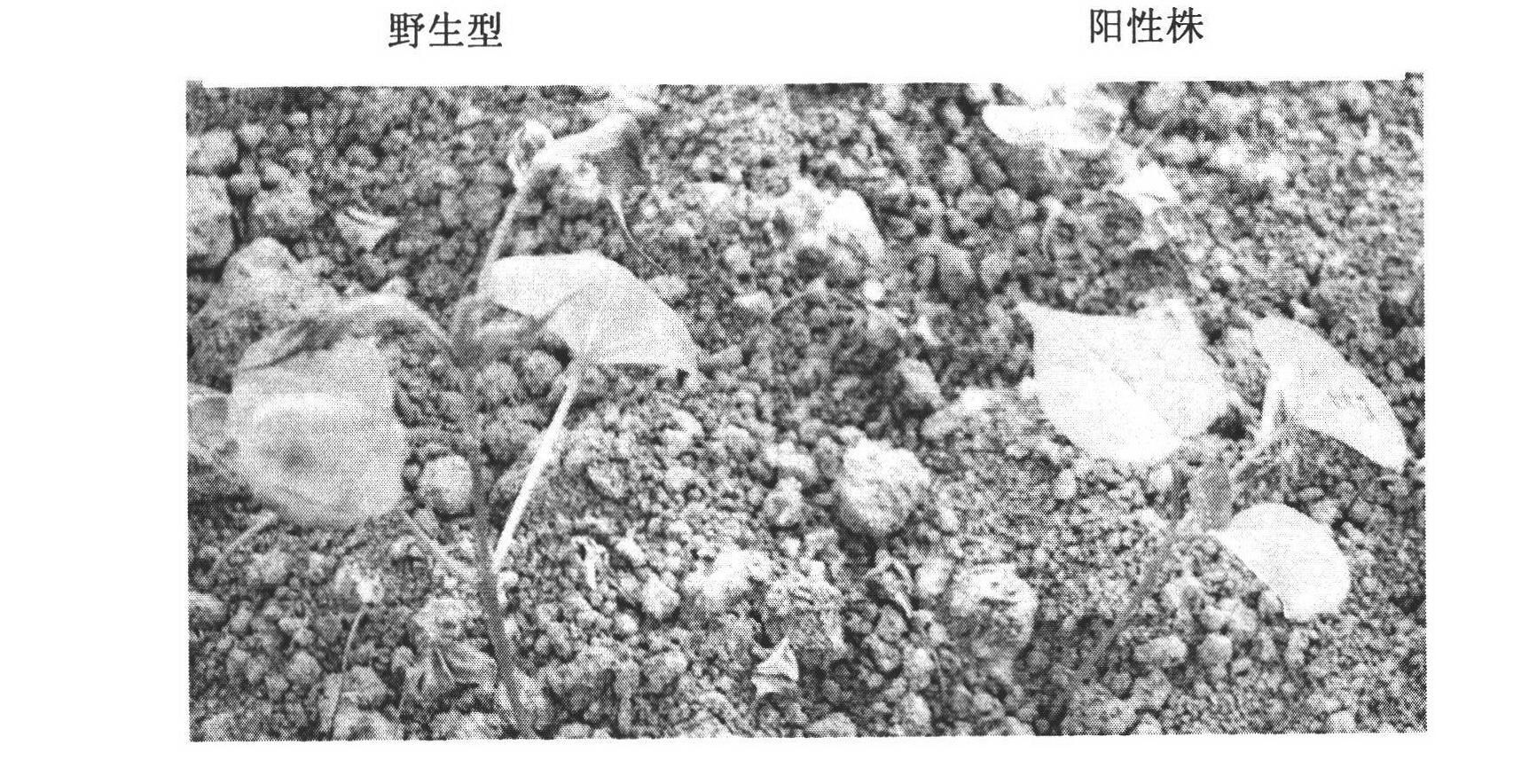High-efficiency transgenic cotton expression vector and application thereof
A technology for plant expression vectors and genes, applied in plant expression vectors and its application fields, can solve problems such as not being suitable for cotton transgenics, low accuracy in screening cotton transgenic positive plants, difficulty in obtaining research results, etc., to achieve easy and accurate screening Effect
- Summary
- Abstract
- Description
- Claims
- Application Information
AI Technical Summary
Problems solved by technology
Method used
Image
Examples
Embodiment 1
[0036] Example 1, construction of convenient screening and high-efficiency transgenic cotton expression vector
[0037] 1. Acquisition of high-efficiency transgenic cotton expression vector
[0038] The pSPT vector is modified on the basis of pCambia1300. The promoter of the target gene we use is a Super strong promoter, and the Flag sequence is added behind the promoter. In addition, the reporter gene is replaced by the tfdA gene from the Hygromicin(R) gene. The final vector was named pSPT ( figure 2). The construction process of the pSPT vector is as follows:
[0039] The CaMV35S promoter in pCAMBIA1300 was replaced with the Super strong promoter. Firstly, our laboratory modified the multiple cloning site of pCAMBIA1300. The modified sites are: SalI, KpnI, BamI, SpeI, SalI, ApaI, SmaI, SwaI, PstI, HindIII, XbaI and AccIII. We first synthesized DNA fragments containing MfeI, BamI, SpeI, SalI, ApaI, SmaI, SwaI, PstI, HindIII, XbaI, AccIII and HindIII restriction sites, th...
PUM
 Login to View More
Login to View More Abstract
Description
Claims
Application Information
 Login to View More
Login to View More - R&D
- Intellectual Property
- Life Sciences
- Materials
- Tech Scout
- Unparalleled Data Quality
- Higher Quality Content
- 60% Fewer Hallucinations
Browse by: Latest US Patents, China's latest patents, Technical Efficacy Thesaurus, Application Domain, Technology Topic, Popular Technical Reports.
© 2025 PatSnap. All rights reserved.Legal|Privacy policy|Modern Slavery Act Transparency Statement|Sitemap|About US| Contact US: help@patsnap.com



